Note: Three bios in three
languages with three different birth years!
Elen Dosia (1915 - May 15, 2002), born Hélène
Odette Zygomala, sometimes known as Ellen Dosia, was a French opera
singer of Greek origin.
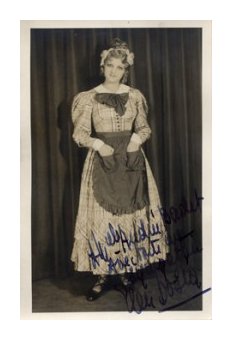 Dosia
was born in Constantinople. She became a soprano singer, and enjoyed
her first major success at age 20 with the title part in Tosca.
She quickly became one of the most popular singers at Opéra
Garnier and
Opéra-Comique, where she performed from 1935 through 1952.
Before World
War II she was described as "the most popular singer in the world". She
appeared often in Massenet operas, performing in Manon and Thaïs, and appearing at the
June 1942 Massenet Gala singing the title role in a tableaux of Esclarmonde. Dosia
was born in Constantinople. She became a soprano singer, and enjoyed
her first major success at age 20 with the title part in Tosca.
She quickly became one of the most popular singers at Opéra
Garnier and
Opéra-Comique, where she performed from 1935 through 1952.
Before World
War II she was described as "the most popular singer in the world". She
appeared often in Massenet operas, performing in Manon and Thaïs, and appearing at the
June 1942 Massenet Gala singing the title role in a tableaux of Esclarmonde.
In 1951 she appeared in Of Men and
Music, a Fox film production, singing excerpts from Salome's
part in Hérodiade.
On November 15, 1947 Dosia debuted at the Metropolitan Opera as Tosca
to Jan Peerce's Cavaradossi and Frank Valentino's Scarpia with Giuseppe
Antonicelli conducting. Her performance was relatively poorly received;
reviews were critical, and after only five performances (in both Tosca and Manon, and as Mélisande in Pelléas et Mélisande
the following season), she retired from the stage in 1952. Thereafter
Dosia concentrated on her family life.
*
* *
* *
13.10. Elen DOSIA: 100. Geburtstag (2013) [October 13, 1913]
Sie kam als Kind nach Frankreich und wurde in Paris und Neuilly
erzogen; sie erhielt frühzeitig Tanzunterricht bei Loie Fuller.
Mit 16
Jahren begann sie das Gesangstudium, mit 18 kam sie auf das
Conservatoire National de Paris. 1936 debütierte sie an der
Opéra-Comique Paris als Tosca. Hier hatte sie große
Erfolge, vor allem
als Mélisande in »Pelléas et
Mélisande«, als Mimi in »La Bohème« und
als Titelheldin in Massenets »Manon«. An der Pariser Grand
Opéra
feierte man sie als Thaïs in der gleichnamigen Oper von Massenet,
als
Juliette in »Roméo et Juliette« und als Marguerite
im »Faust« von
Gounod. Sie heiratete den Tenor André Burdino (1891-1987) und
war mit
ihm zusammen 1937-40 an der Oper von Chicago engagiert. In Chicago sang
sie sehr erfolgreich Partien wie die Manon, die Juliette, die Giulietta
und die Antonia in »Hoffmanns Erzählungen« und gab
zusammen mit André
Burdino Konzerte. Sie gastierte in Brüssel, Prag, Zürich,
Belgrad,
Athen und Istanbul. 1939 sang sie in Scheveningen die Mélisande.
Während des Zweiten Weltkrieges trat sie an den beiden
großen
Opernhäusern von Paris auf. 1947-49 gastierte sie sehr erfolgreich
in
insgesamt fünf Vorstellungen an der Metropolitan Oper New York:
als
Tosca (ihre Antrittspartie), als Manon und als Mélisande. 1948
trat sie
an der Oper von Monte Carlo als Thaïs auf. 1952 nahm sie von der
Bühne
Abschied. Ihre große Bühnenkarriere verdankte sie nicht
zuletzt auch
der aparten Schönheit ihrer Erscheinung und ihrer eminenten
Darstellungskunst. Sie starb 2002 in Boulogne-sur-Seine. Ihre
schöne
lyrische Sopranstimme ist lediglich durch zwei Schallplatten der Marke
HMV überliefert.
*
* *
* *
Il y a tout juste un demi-siècle la cantatrice Elen DOSIA se
retirait
de la scène en plein succès après une
dernière interprétation de la
Tosca à la Salle Favart. Cette artiste brillante avait
été acclamée
dans les principaux théâtres du monde entier et ses
interprétations
restèrent longtemps gravées dans les mémoires des
amateurs d’opéras :
Thaïs, Grisélidis, Pelléas et Mélisande,
Roméo et Juliette, Othello...
Cinquante ans ont passé depuis, et le 10 mai 2002, à
Boulogne-sur-Seine
où elle vivait depuis de nombreuses années, cette gloire
des années
quarante s’en est allée rejoindre ses pairs au paradis des
musiciens.
Seul nous reste à présent, pour nous souvenir de sa voix
limpide,
parfaitement maîtrisée, l’enregistrement mémorable
en juin 1944 de
Thaïs de Massenet, avec Paul Cabanel, Georges Noré,
Huguette
Saint-Arnaud et Madeleine Drouot, sous la direction de Jules Gressier
(Malibran Music, CDRG 132).
Née à Constantinople le 13 octobre 1918, Odette
Hélène Zygomala
s’installait plus tard avec sa famille à Paris. Sans doute
descendait-elle de cette très ancienne famille grecque
originaire
d’Argos, puis de Nauplie, établie à Constantinople au
XVIe siècle ?
C’est par la danse qu’elle débutait l’étude des arts. La
célèbre
danseuse Loïe Fuller (1862-1928), artiste de music-hall
américaine
émigrée à Paris, qui inventa " la danse serpentine
" (utilisation de
longs voiles transparents éclairés de tous
côtés), lui enseigna l’art
du mouvement et de la comédie. Elle entrait ensuite en 1934,
à l’âge de
16 ans, au Conservatoire de musique et de déclamation et deux
années
plus tard en ressortait, trois premiers prix en poche : chant,
opéra,
opéra-comique. Cette même année 1936, en octobre
elle épousait le ténor
André Burdino (1891-1987) qui triomphait notamment dans Mignon.
Le
couple devra se séparer en 1943, mais entre temps la gloire
sourit à
Odette Zygomala, devenue Elen Dosia pour la scène. Un mois
après son
mariage, elle débutait à l’Opéra-Comique avec le
ténor italien Giuseppe
Lugo dans La Tosca de Puccini, qu’elle chantait encore en 1941 avec
Rouquetty et Cabanel. Ce 28 novembre 1936 fut le véritable point
de
départ d’un immense succès qui se confirmera au fil de
ses apparitions
sur scènes et qui lui valurent un engagement pour l’Opéra
de Paris le
29 avril 1939. Elle se produisait pour la première fois sur la
scène du
Palais Garnier dans le rôle de Gina de La Chartreuse de Parme
(opéra en
4 actes et 11 tableaux, livret d’Armand Lunel d’après Stendhal,
musique
de Henri Sauguet). Entre 1936 et 1951, Elen Dosia, vedette des
Théâtres
Lyriques Nationaux (Opéra et Opéra-Comique), joua tous
les plus grands
rôles de l’opéra. Parmi ceux-ci notons les ouvrages
italiens de Verdi :
la Traviata et Othello... et de Puccini : la Bohème
(Opéra-Comique, 22
novembre 1941, direction : Eugène Bozza) et la Tosca..., ceux de
Massenet : Grisélidis (Opéra, 30 octobre 1942),
Thaïs, Esclarmonde,
Hérodiade, Manon (Opéra-Comique, 13 juillet 1941,
direction : Gustave
Cloez) et bien d’autres encore : Marouf (Henri Rabaud), Les Contes
d’Hoffmann (Offenbach), L’Heure espagnole (Ravel), Roméo et
Juliette et
Faust (Gounod)... Elle participa également à plusieurs
créations, parmi
lesquelles Le bon roi Dagobert, comédie musicale en 4 actes de
Marcel
Samuel-Rousseau (poème d’André Rivoire), en 1938 à
la Salle Favart, qui
fera dire au musicologue Louis Laloy : " Mlles Vina Bovy et Elen Dosia,
l’une plus vive et l’autre plus tendre, ont toutes deux des voix
charmantes, et sont aussi fort agréables à voir, dans les
rôles de la
fiancée princière et de son humble, mais victorieuse
rivale. ", et en
janvier 1944 dans ce même théâtre,
l’opéra-comique Amphytrion 38 de
Marcel Bertrand (compositeur méconnu, auteur également
d’un drame
lyrique en 3 actes Sainte-Odile, donné à
l’Opéra-Comique en 1923),
d’après l’œuvre de Jean Giraudoux. A l’étranger on la
réclamait aussi !
Entre 1937 et mars 1940, avec son mari André Burdino, elle se
produisait dans les opéras de Chicago, San Francisco et Los
Angeles, et
plus tard effectuait des tournées en Grèce, son pays
d’origine, ainsi
qu’en Yougoslavie, en Tchécoslovaquie, en Suisse, en Tunisie, au
Maroc
et au Canada. En novembre 1949 elle débutait au Met de New-York
dans
Thaïs, puis fut engagée dans la Tosca aux
côtés d’Ezio Pinza, Raoul
Jobin et Martial Singher, et assura trois saisons successives. Au cours
de sa carrière Elen Dosia s’est produite avec les plus grands
chanteurs
de l’époque, notamment le ténor français Louis
Arnoult, l’acteur et
chanteur d’origine polonaise Jan Kiepura, le ténor italien de la
Scala
de Milan Giacomo Lauri Volpi, le ténor dramatique corse
José Luccioni,
le baryton français Jacques Jansen, célèbre pour
son interprétation de
Pelléas, le ténor américain du Metropolitan
Opéra Jan Peerce, le
baryton américain Lawrence Tibbett, interprète
légendaire de
Falstaff... Elen Dosia s’essaya aussi quelque temps dans le
cinéma,
entre autres dans L’Ange gardien du réalisateur français
Jacques de
Casembroot (1942), auquel on doit également L’Assassin est parmi
nous
(1934) et un film hollywoodien d’Irving Reis, Of men and music, "
Enchantement musical " tourné en 1950, genre très en
vogue à l’époque,
auquel participaient également Dimitri Mitropoulos, Jascha
Haïfetz et
Arthur Rubinstein.
En 1952, après son remariage avec un compatriote grec, M. Jean
Georgiadès, elle mettait volontairement fin à sa
carrière de cantatrice
internationale, notamment afin d’élever son fils Philippe.
Totalement
retirée du monde musical, Elen Dosia avait cependant tenu
à garder un
mince fil d’Ariane : elle fit longtemps partie du Comité
d’honneur de
l’Union des Femmes Artistes Musiciennes, au sein de laquelle elle
siégeait dans les jurys des concours de chant.
Pour clore ce bref portrait d’une grande artiste, ajoutons que le
spécialiste de l’opéra qu’est Jean Gourret, dans son "
Dictionnaire des
cantatrices de l’Opéra de Paris " (Albatros, 1987)
précise en outre
qu’Elen Dosia était une " musicienne raffinée, excellente
comédienne,
[et une ] femme ravissante. "
|
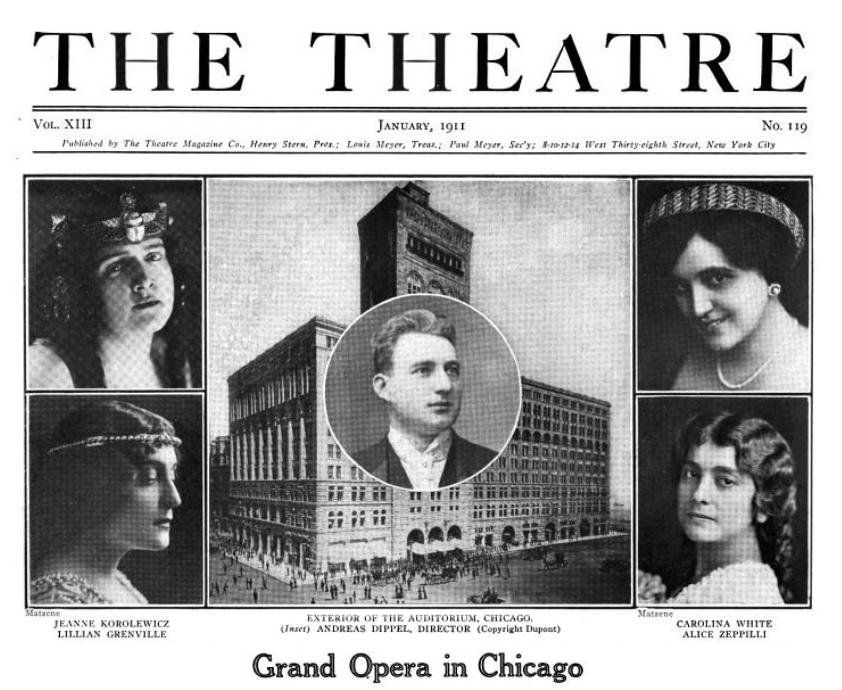
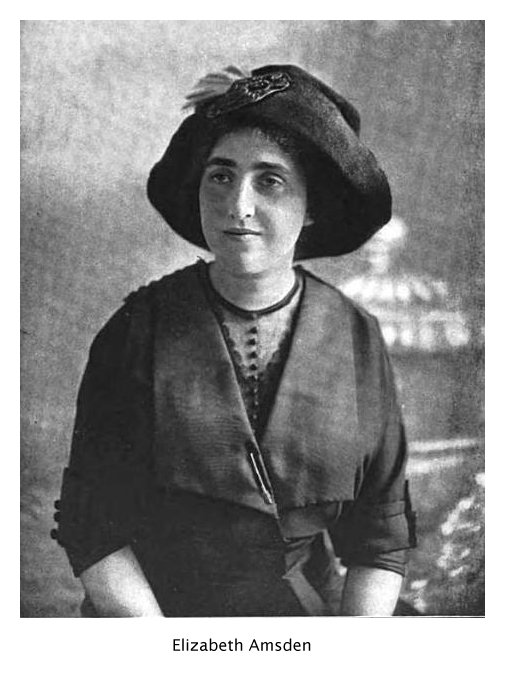
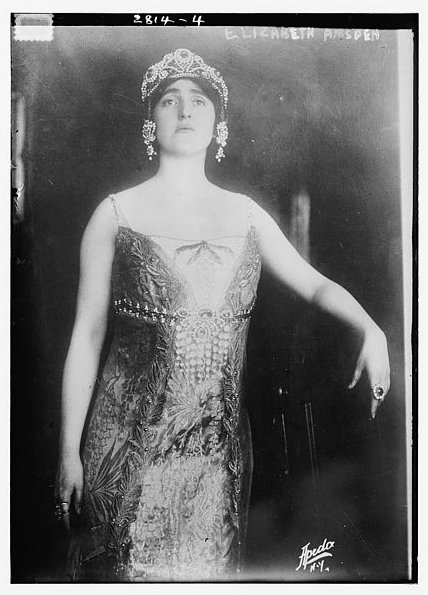 Elizabeth
Amsden
Elizabeth
Amsden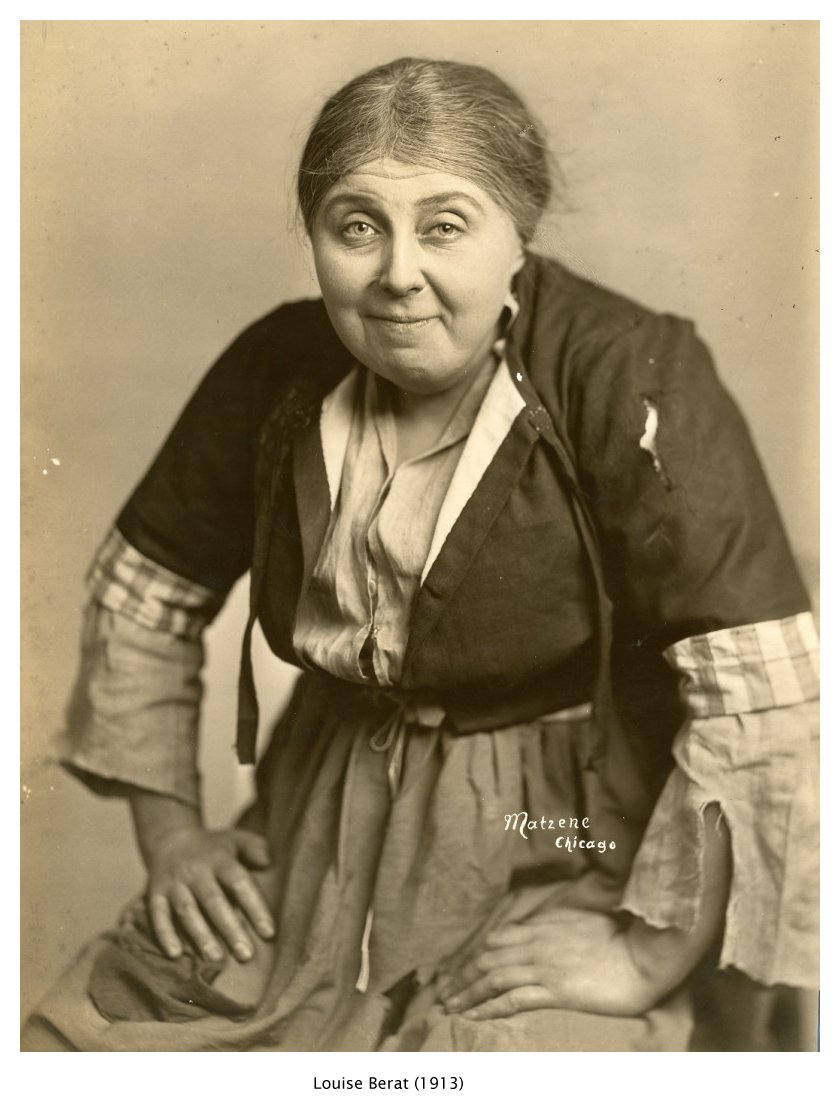
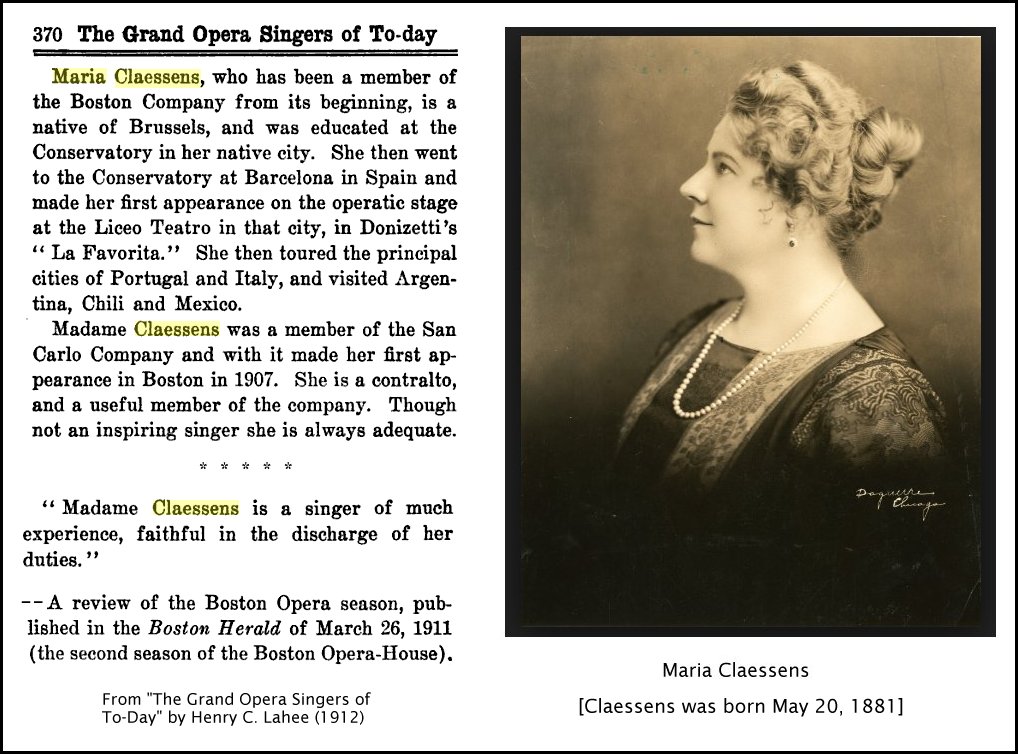
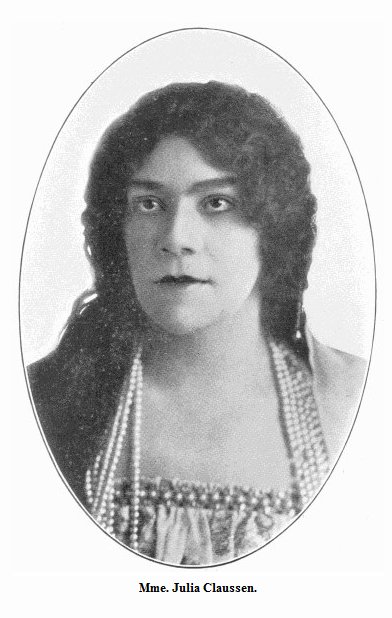 If
one should ask me what is the first consideration in becoming a success
as a singer, I should say the ability to criticise one's self. In my
own case I had a very competent musician as a teacher. He told me that
my voice was naturally placed and did very little to help place it
according to his own ideas. Perhaps that was well for me, because I
knew myself what I was about. He used to say, "That sounds beautiful,"
but all the time I knew that it sounded terrible. It was then that I
learned that my ear must be my best teacher. My teacher, for instance,
told me that I would never be able to trill. This was very
disheartening; but he really believed, according to his conservative
knowledge, that I should never succeed in getting the necessary
flexibility.
If
one should ask me what is the first consideration in becoming a success
as a singer, I should say the ability to criticise one's self. In my
own case I had a very competent musician as a teacher. He told me that
my voice was naturally placed and did very little to help place it
according to his own ideas. Perhaps that was well for me, because I
knew myself what I was about. He used to say, "That sounds beautiful,"
but all the time I knew that it sounded terrible. It was then that I
learned that my ear must be my best teacher. My teacher, for instance,
told me that I would never be able to trill. This was very
disheartening; but he really believed, according to his conservative
knowledge, that I should never succeed in getting the necessary
flexibility.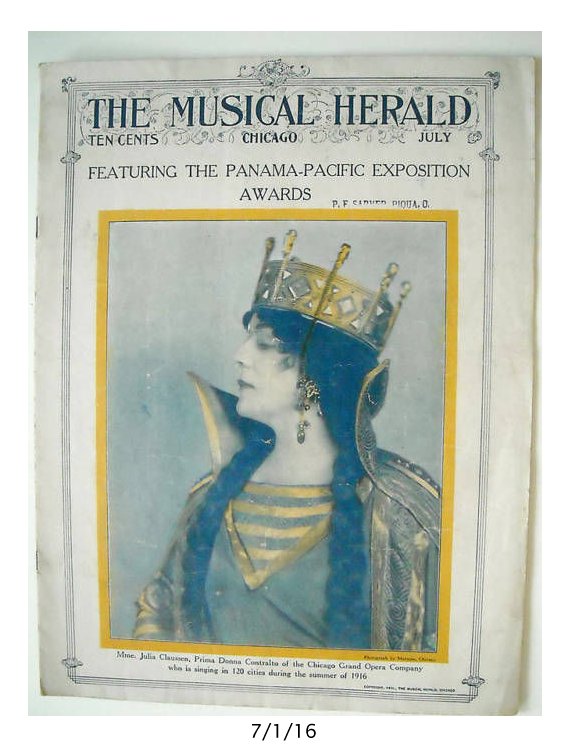
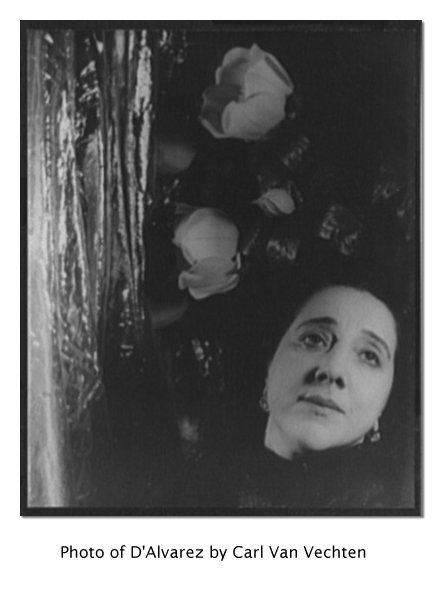
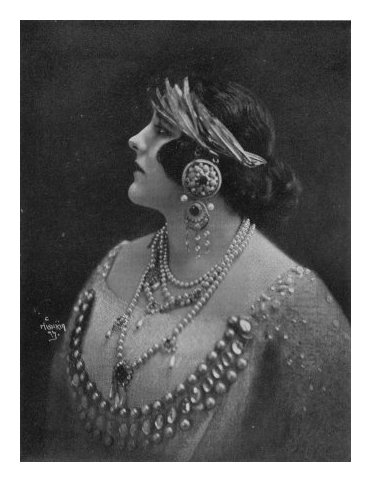 Following
her season in New York City, she went to London to help Oscar
Hammerstein inaugurate his London Opera in 1911; that year, she scored
great successes in French roles. D'Alvarez subsequently appeared at
leading European opera houses such as Covent Garden, and also sang in
Chicago and Boston. She made one film,
Following
her season in New York City, she went to London to help Oscar
Hammerstein inaugurate his London Opera in 1911; that year, she scored
great successes in French roles. D'Alvarez subsequently appeared at
leading European opera houses such as Covent Garden, and also sang in
Chicago and Boston. She made one film, 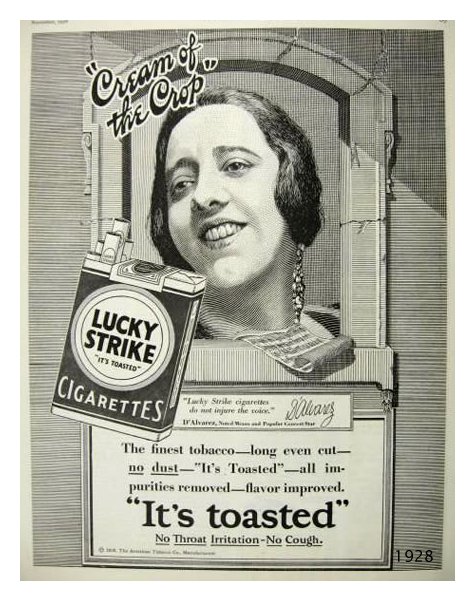
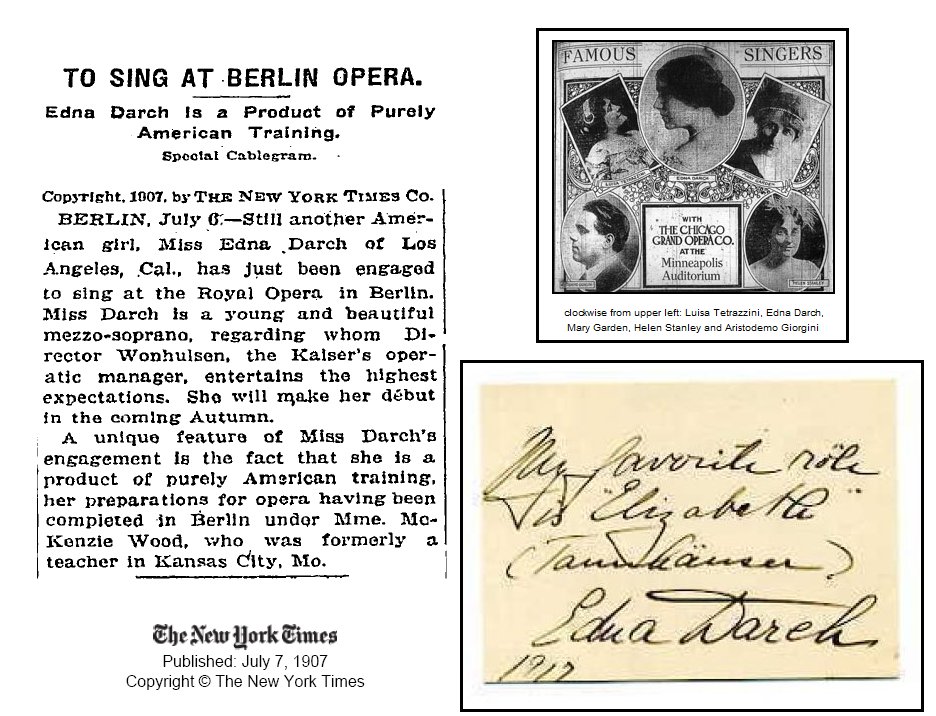
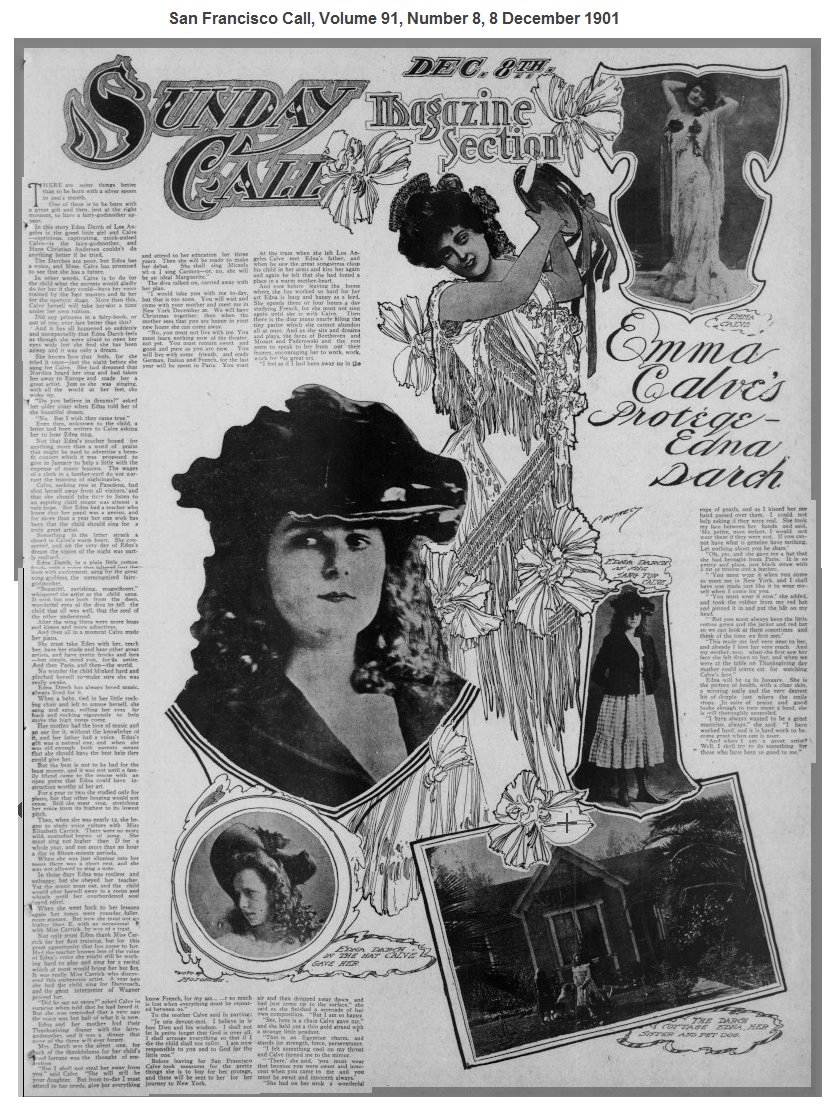
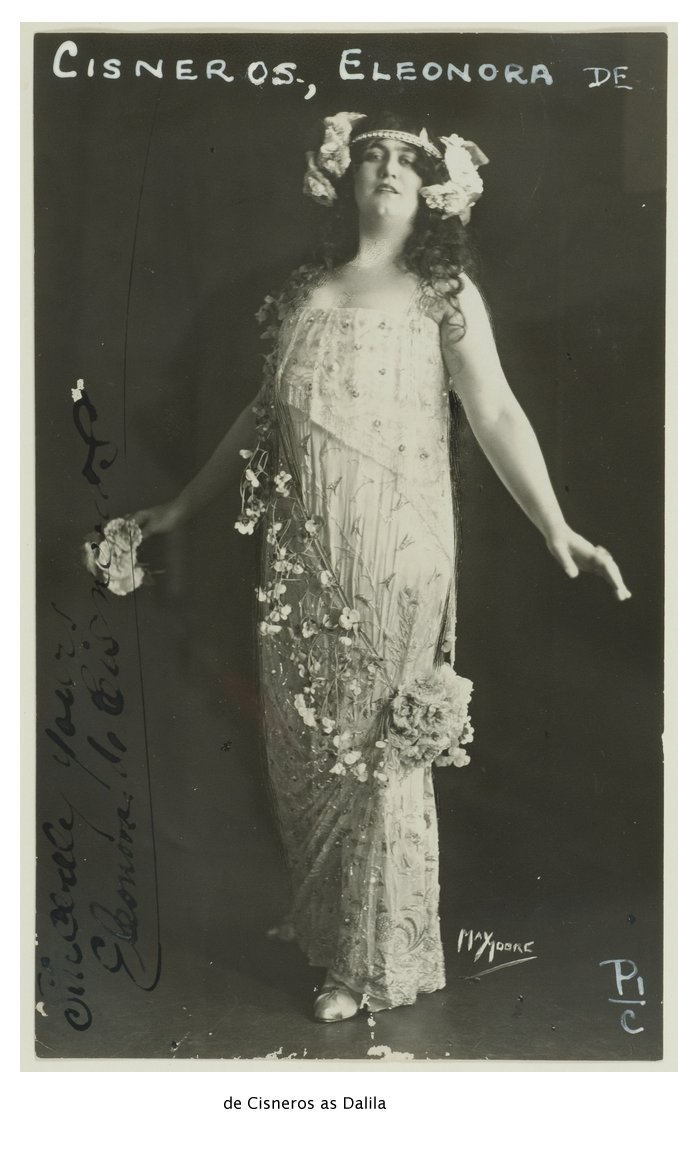
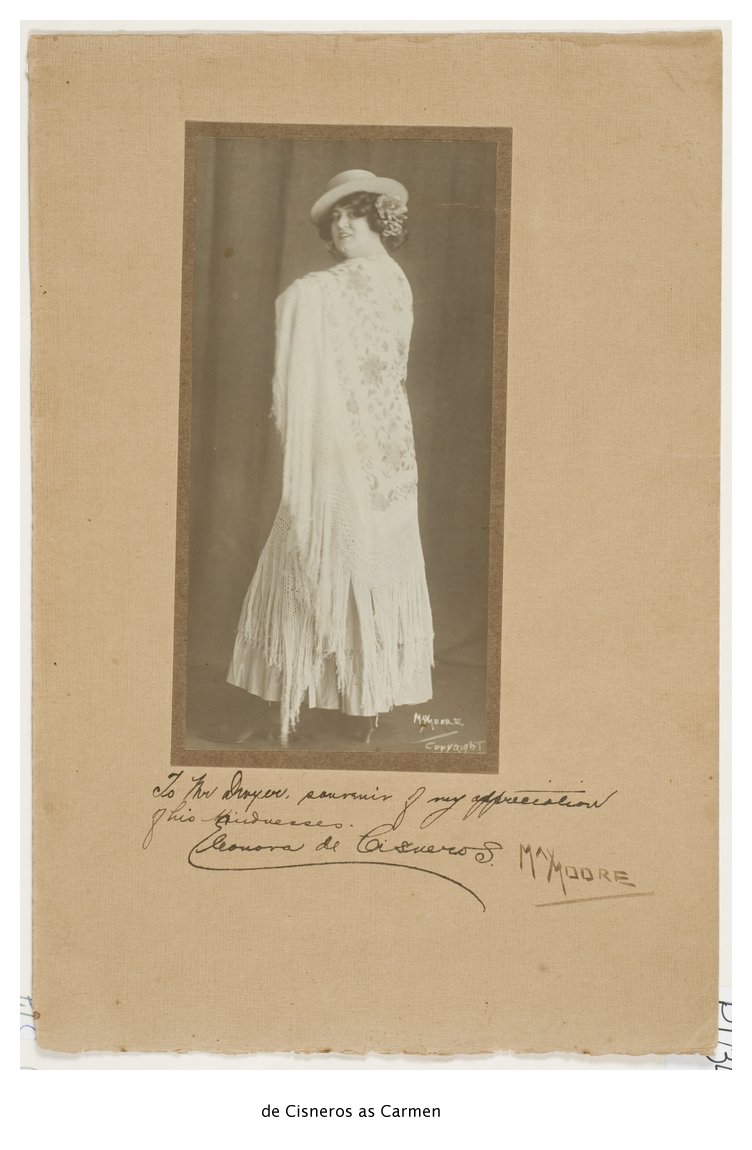
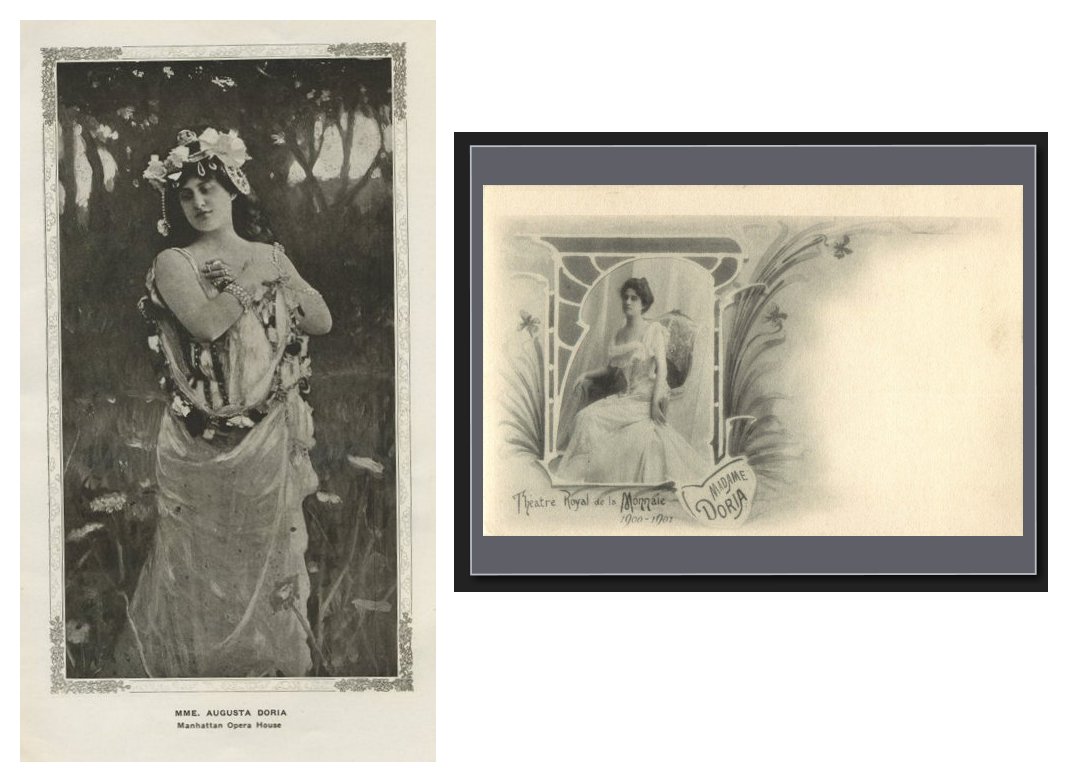
 Dosia
was born in Constantinople. She became a soprano singer, and enjoyed
her first major success at age 20 with the title part in
Dosia
was born in Constantinople. She became a soprano singer, and enjoyed
her first major success at age 20 with the title part in 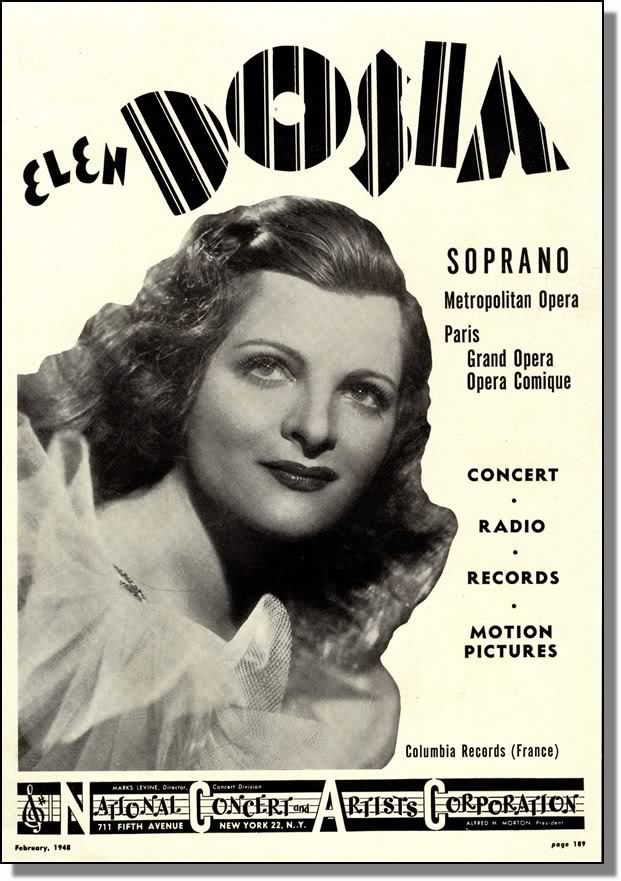
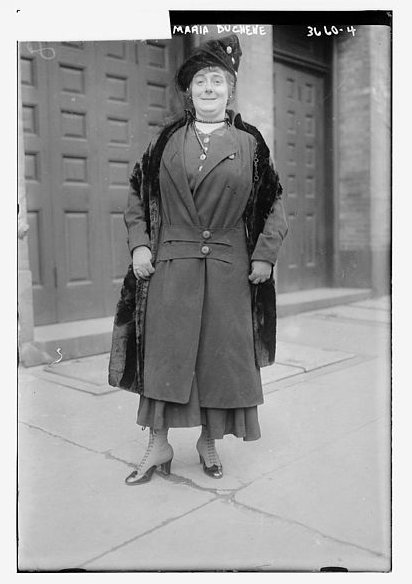
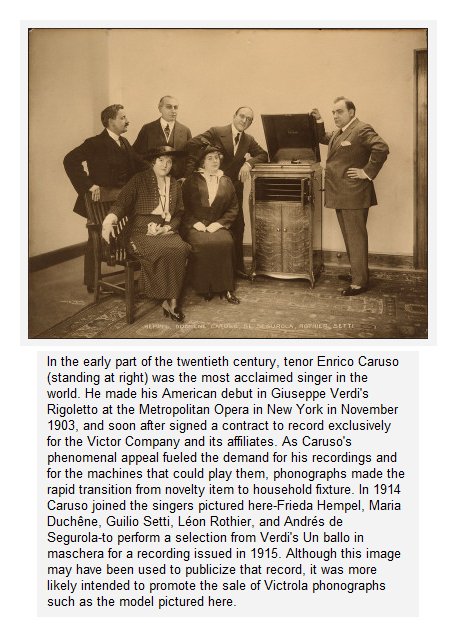
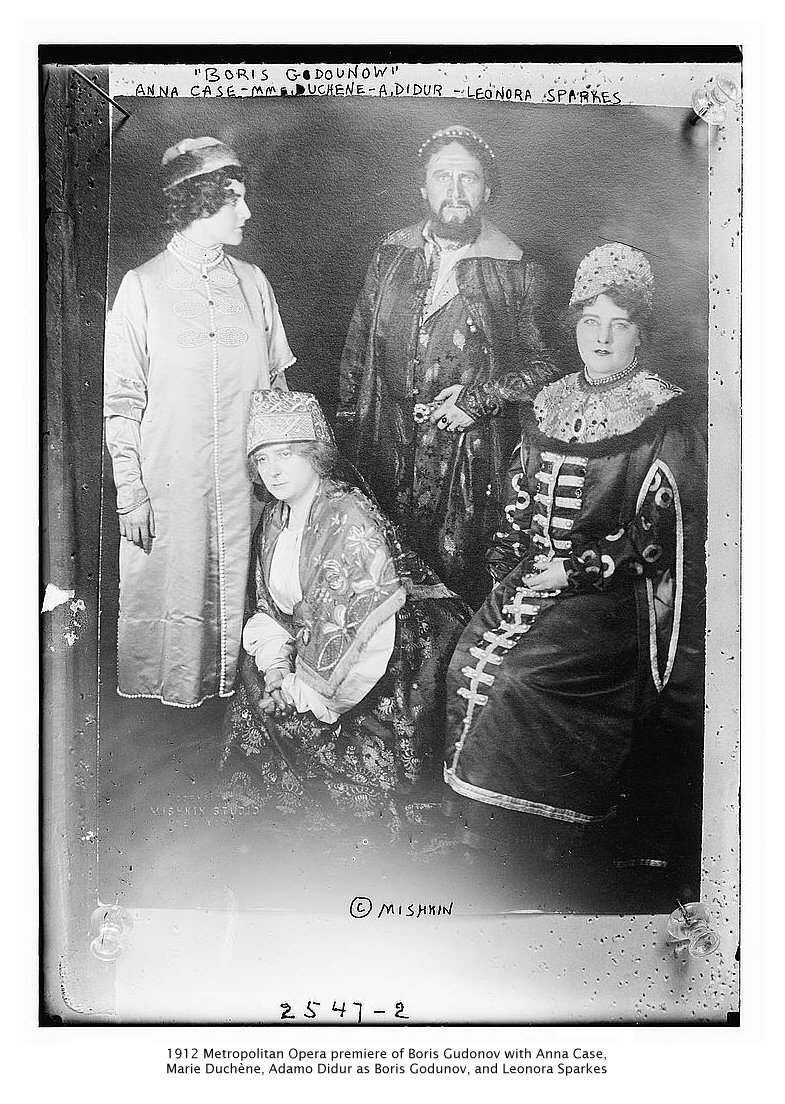
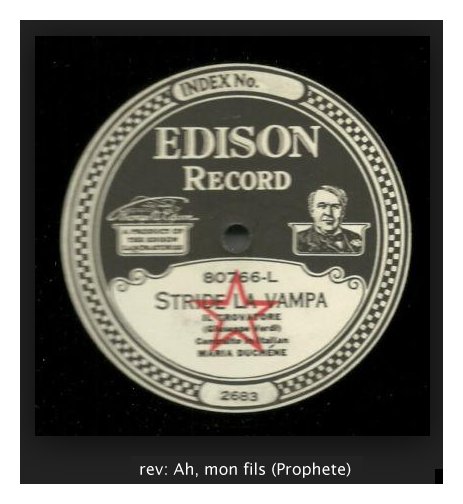
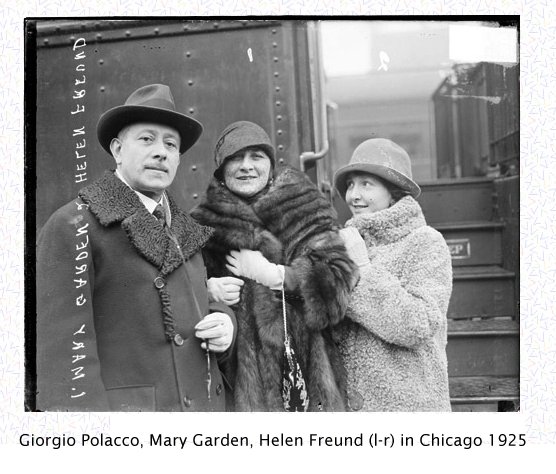
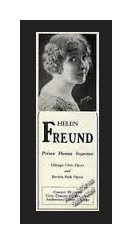 The second of the series of concerts for members of the
Civic Music Association will be given Wednesday. Jan. 5 in Spaldlng
Auditorium. The program will begin at the usual hour, 8:15 o'clock. The
Association is particularly fortunate in securing for one of the
recitals such artists as Alfred Wallenstein and Helen Freund. They are
preeminently American products and tho so young have made international
reputations. The success of these two young artists has been almost
phenomenal. The acclaim these musicians have received from critics and
public alike is based upon the recognition of real and actual
attainment, talent developed to the point of real genius. Alfred
Wallensteln, premiere 'cellist of the Chicago Symphony Orchestra, has
achieved a rare standing in the very highest rank of Master 'cellists.
Helen Freund, charming young soprano mado her debut two years ago in
the Chicago Opera Co with Mary Garden in "Werther." Her success was
instantaneous. Miss Freund has a good deal of common sense advice
gathered from her own experience, for young American girls who aspire
to operatic fame. The committee urges those members who find it
impossible to attend this recital to inform the secretary, Miss
Dickinson, so that other members desiring "guest" tickets will be able
to procure them.
The second of the series of concerts for members of the
Civic Music Association will be given Wednesday. Jan. 5 in Spaldlng
Auditorium. The program will begin at the usual hour, 8:15 o'clock. The
Association is particularly fortunate in securing for one of the
recitals such artists as Alfred Wallenstein and Helen Freund. They are
preeminently American products and tho so young have made international
reputations. The success of these two young artists has been almost
phenomenal. The acclaim these musicians have received from critics and
public alike is based upon the recognition of real and actual
attainment, talent developed to the point of real genius. Alfred
Wallensteln, premiere 'cellist of the Chicago Symphony Orchestra, has
achieved a rare standing in the very highest rank of Master 'cellists.
Helen Freund, charming young soprano mado her debut two years ago in
the Chicago Opera Co with Mary Garden in "Werther." Her success was
instantaneous. Miss Freund has a good deal of common sense advice
gathered from her own experience, for young American girls who aspire
to operatic fame. The committee urges those members who find it
impossible to attend this recital to inform the secretary, Miss
Dickinson, so that other members desiring "guest" tickets will be able
to procure them.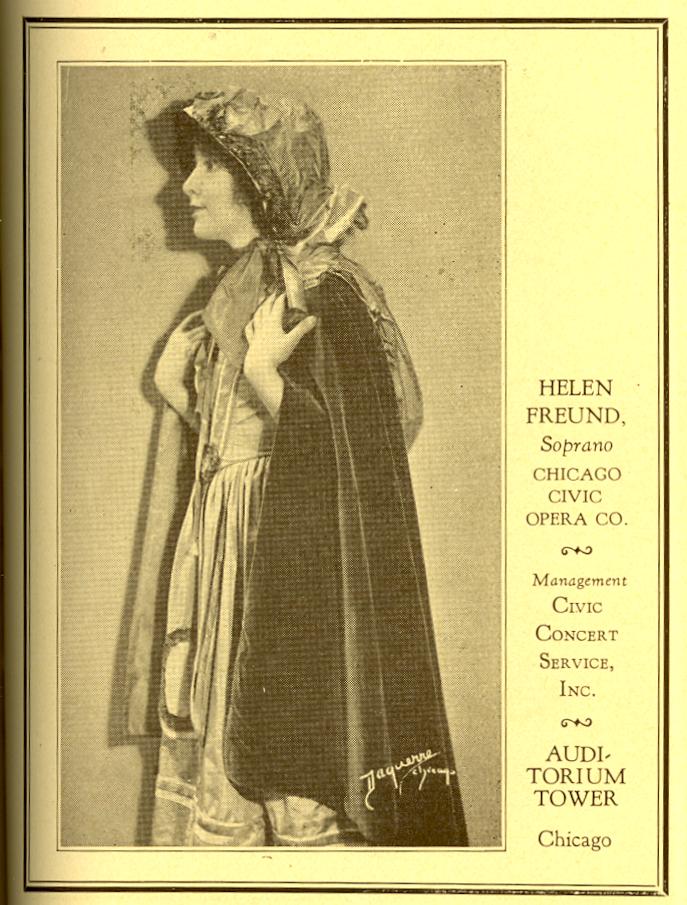
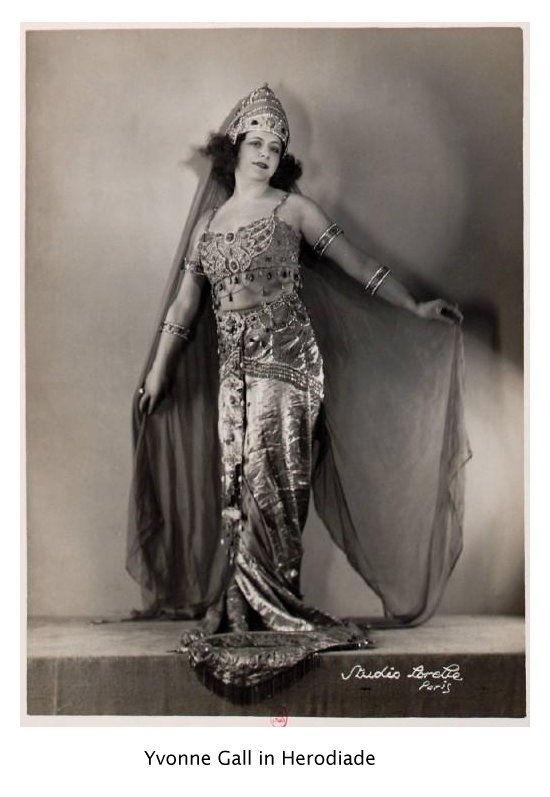
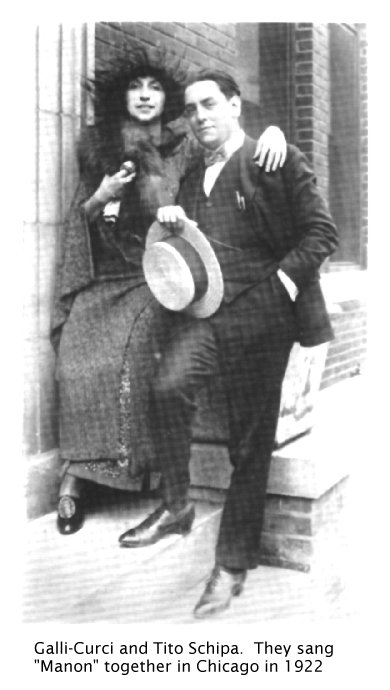 She
was born as Amelita Galli into an upper-middle-class family in Milan,
where she studied piano at the Milan Conservatory, winning a gold medal
and at the age of 16 was offered a position as a "professor" or teacher
there. She was inspired to sing by her grandmother. Operatic composer
Pietro Mascagni also encouraged Galli-Curci's singing ambitions. By her
own choice, Galli-Curci's voice was largely self-trained. She honed her
technique by listening to other sopranos, reading old singing-method
books, and doing piano exercises with her voice instead of using a
keyboard.
She
was born as Amelita Galli into an upper-middle-class family in Milan,
where she studied piano at the Milan Conservatory, winning a gold medal
and at the age of 16 was offered a position as a "professor" or teacher
there. She was inspired to sing by her grandmother. Operatic composer
Pietro Mascagni also encouraged Galli-Curci's singing ambitions. By her
own choice, Galli-Curci's voice was largely self-trained. She honed her
technique by listening to other sopranos, reading old singing-method
books, and doing piano exercises with her voice instead of using a
keyboard.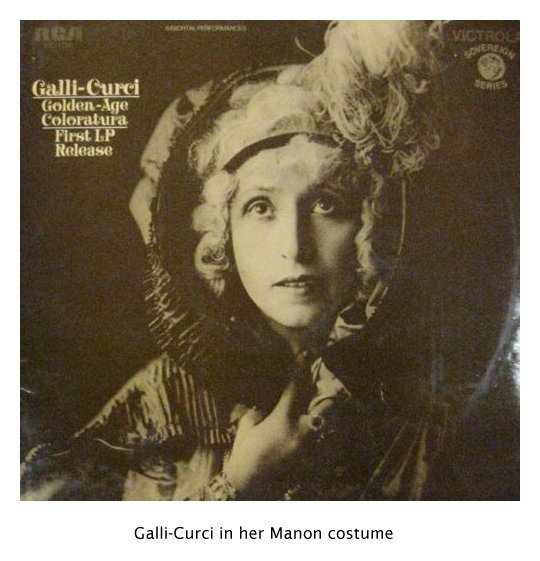
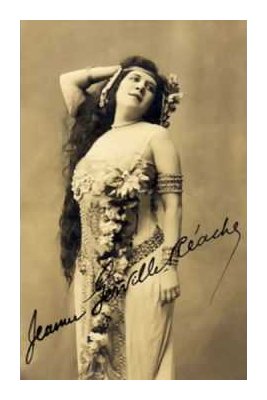 Jeanne
Gerville-Réache was born in Orthez, France. Her father was the
governor
of the French Caribbean islands Guadeloupe and Martinique, and she
spent her childhood in Martinique with him and her Spanish mother. She
studied in Paris under Rosine Laborde through whom she met operatic
soprano Emma Calvé, a former pupil of Laborde's. Calvé
arranged for
Gerville-Réache to make her professional opera début as
Orphée in
Gluck's Orphée et Eurydice at the Opéra-Comique in 1899.
Mezzo-soprano
Pauline García-Viardot coached her for this first production and
then
continued to teach her for the next several years.
Jeanne
Gerville-Réache was born in Orthez, France. Her father was the
governor
of the French Caribbean islands Guadeloupe and Martinique, and she
spent her childhood in Martinique with him and her Spanish mother. She
studied in Paris under Rosine Laborde through whom she met operatic
soprano Emma Calvé, a former pupil of Laborde's. Calvé
arranged for
Gerville-Réache to make her professional opera début as
Orphée in
Gluck's Orphée et Eurydice at the Opéra-Comique in 1899.
Mezzo-soprano
Pauline García-Viardot coached her for this first production and
then
continued to teach her for the next several years.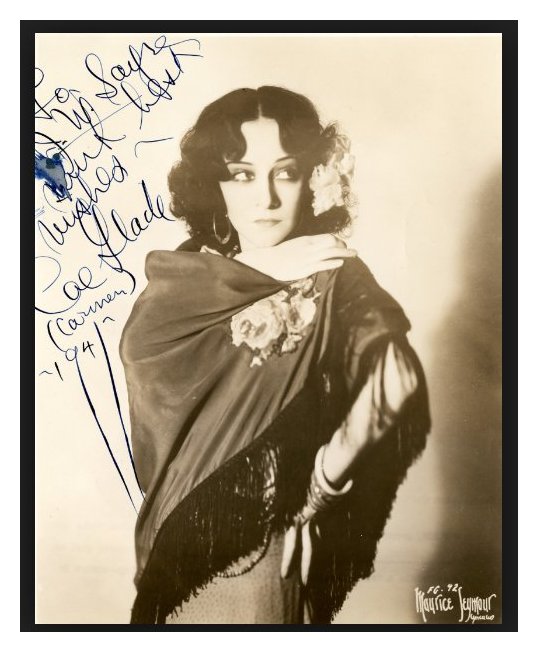
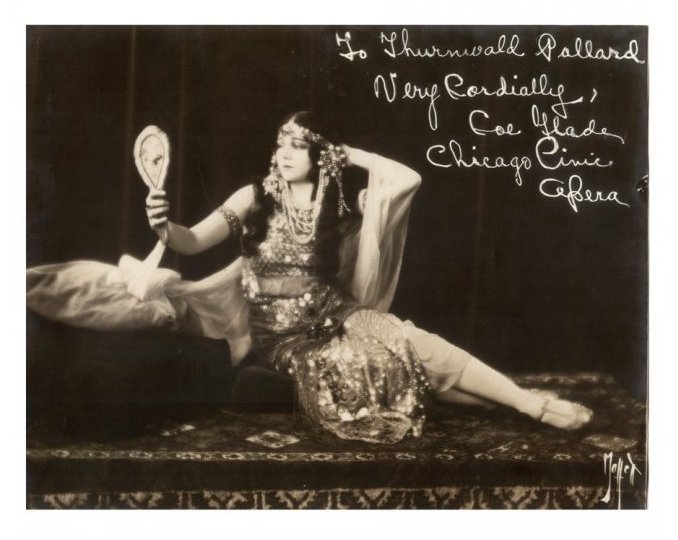
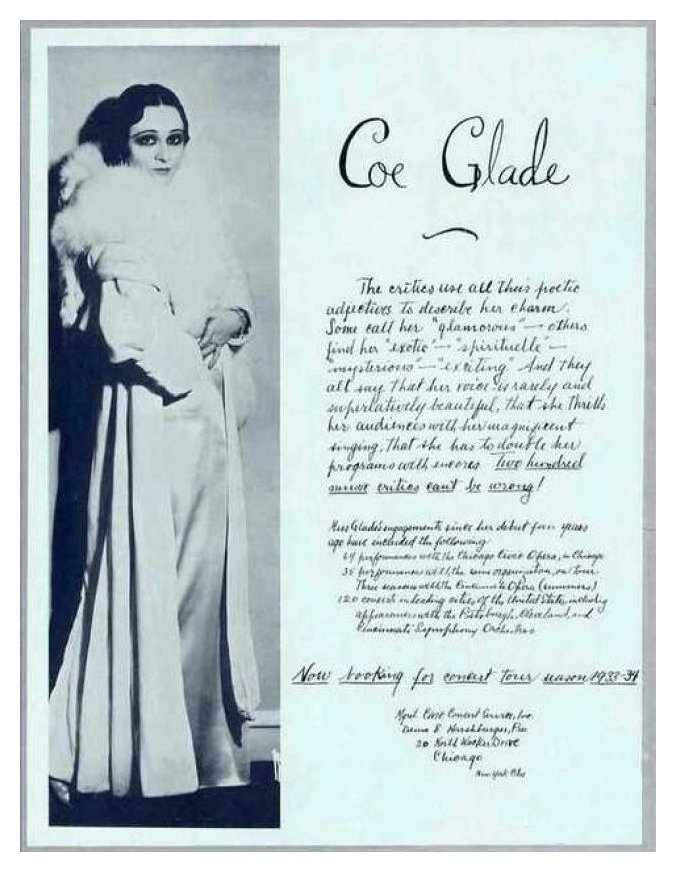
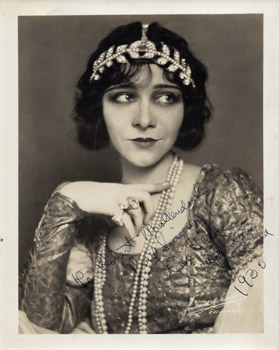
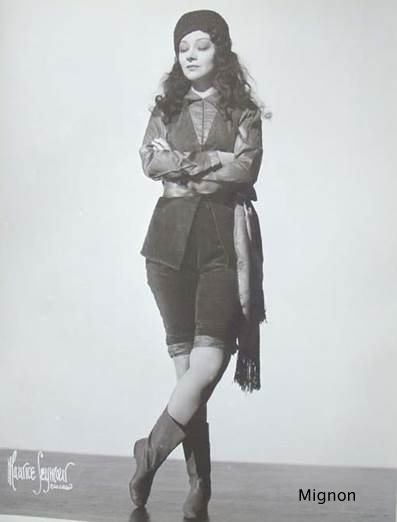
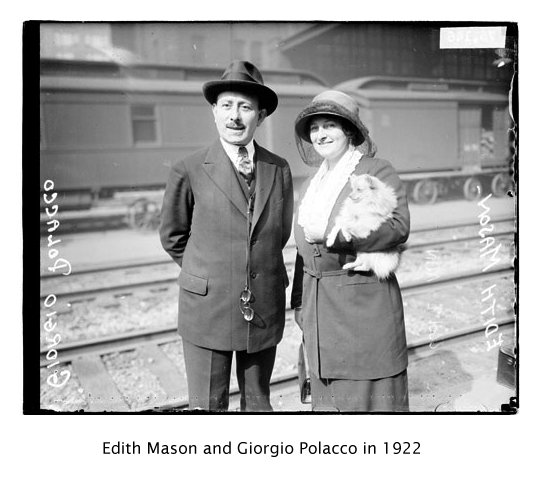
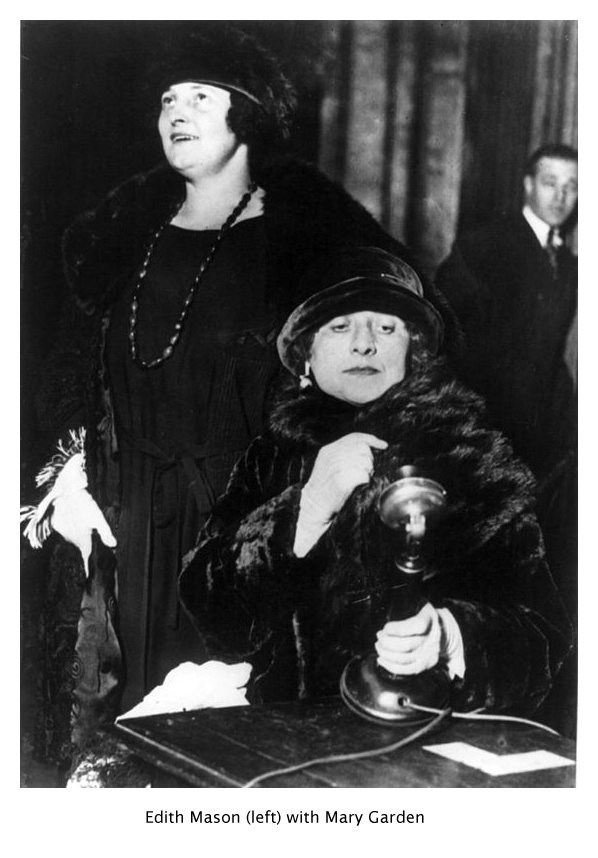
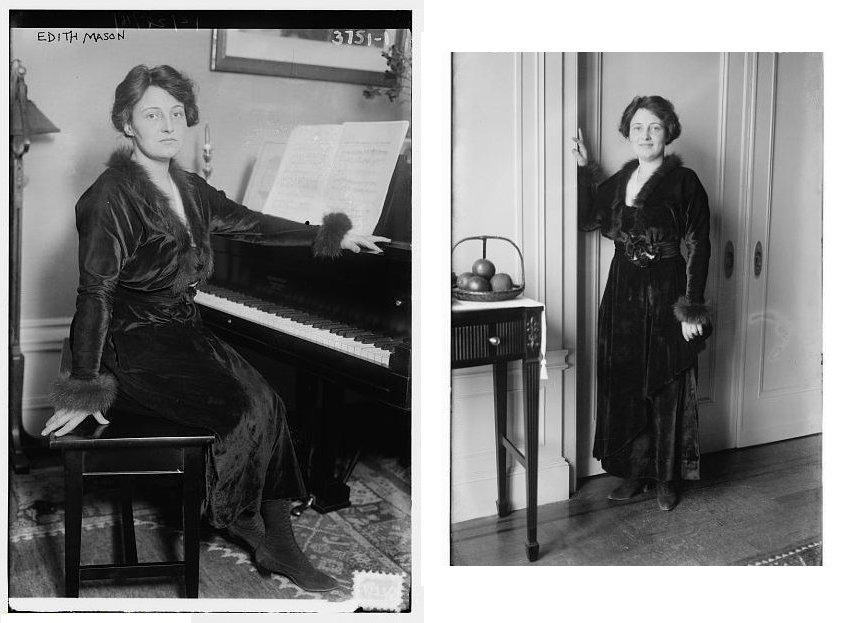
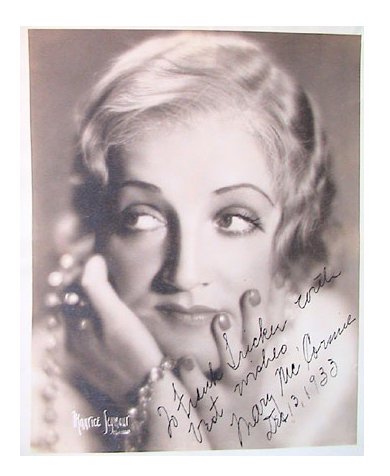 McCormic
was born in Belleville, Arkansas. A onetime obscure Arkansas housewife,
McCormic rose to stardom and enjoyed a colorful personal life — four
marriages and four divorces (men of no resemblance to one another),
almost a fifth, a high-dollar lawsuit defense for assaulting an
unauthorized female biographer, boom and bust personal wealth, witty
humor, and brush with royalty. McCormic captured world intrigue with
the panache of the operas she starred in, all with the backdrop of
being born at the end of the Gilded Age, growing up as a teenager
during World War I, flourishing as an opera superstar through the
Roaring Twenties, Prohibition, the Jazz Age, the Great Crash, and
failing in her last two high profile marriages in the throes of the
Great Depression. She died, in her eighties, in Amarillo, Texas.
McCormic
was born in Belleville, Arkansas. A onetime obscure Arkansas housewife,
McCormic rose to stardom and enjoyed a colorful personal life — four
marriages and four divorces (men of no resemblance to one another),
almost a fifth, a high-dollar lawsuit defense for assaulting an
unauthorized female biographer, boom and bust personal wealth, witty
humor, and brush with royalty. McCormic captured world intrigue with
the panache of the operas she starred in, all with the backdrop of
being born at the end of the Gilded Age, growing up as a teenager
during World War I, flourishing as an opera superstar through the
Roaring Twenties, Prohibition, the Jazz Age, the Great Crash, and
failing in her last two high profile marriages in the throes of the
Great Depression. She died, in her eighties, in Amarillo, Texas.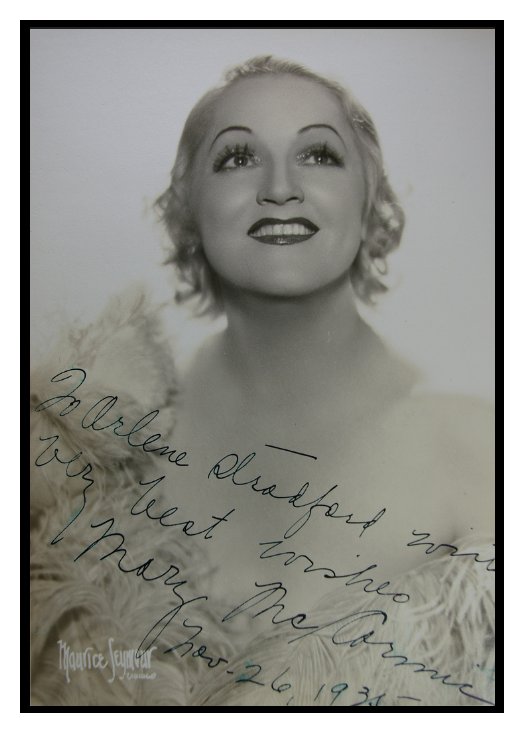
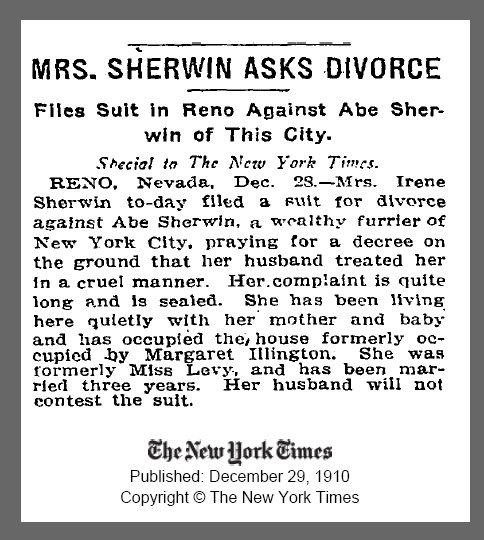
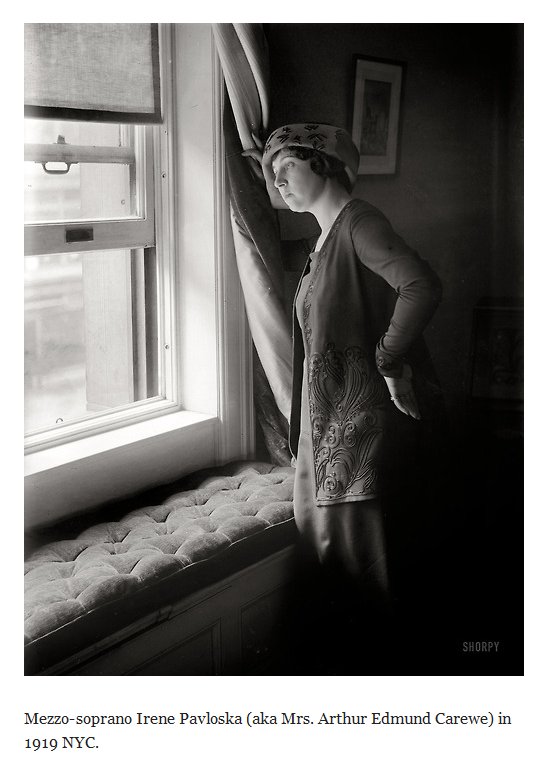
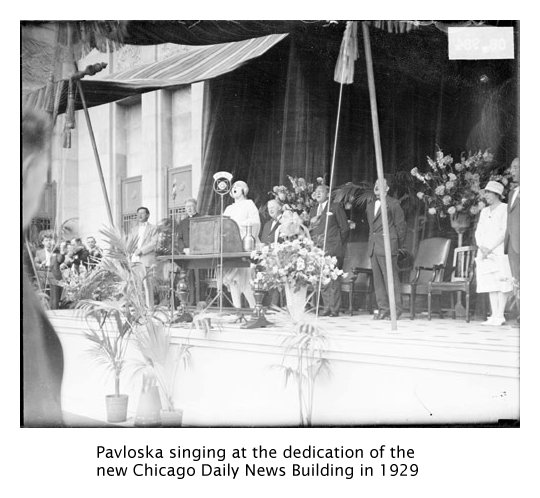
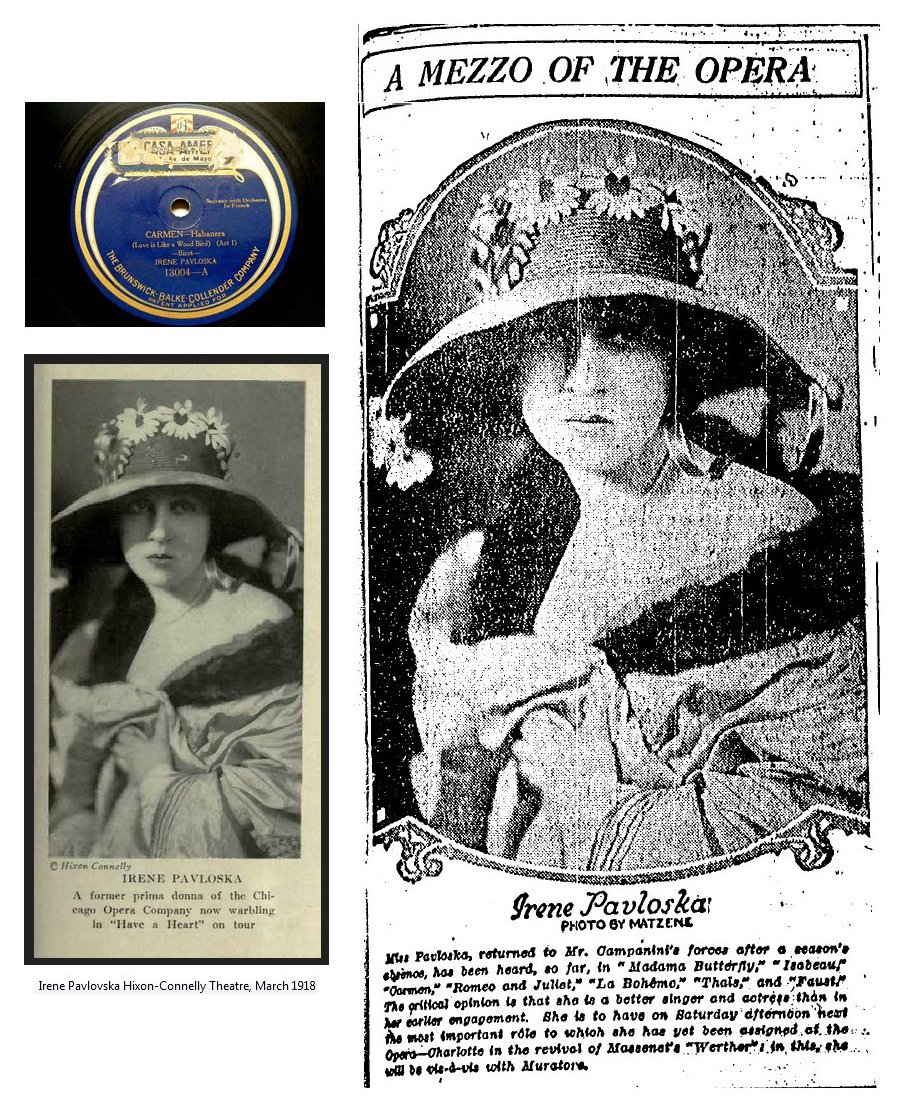
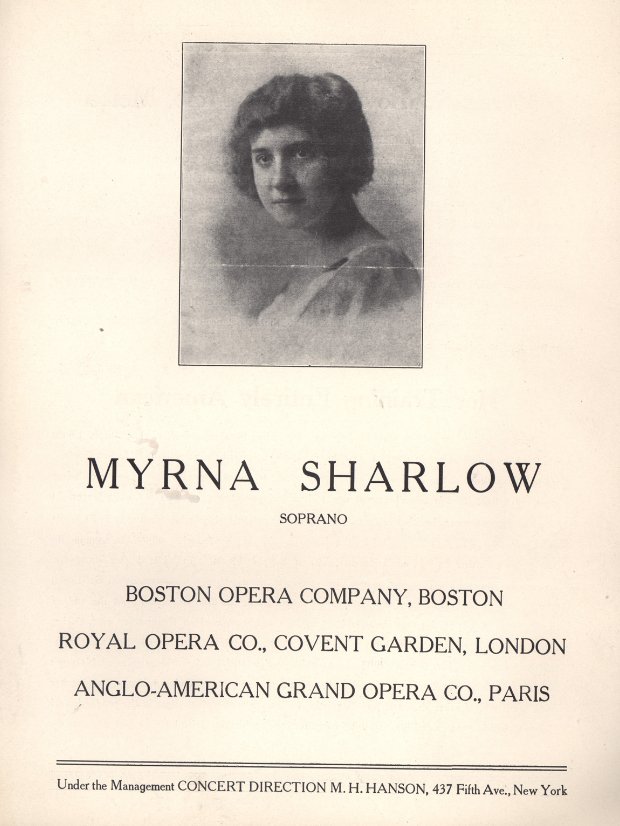
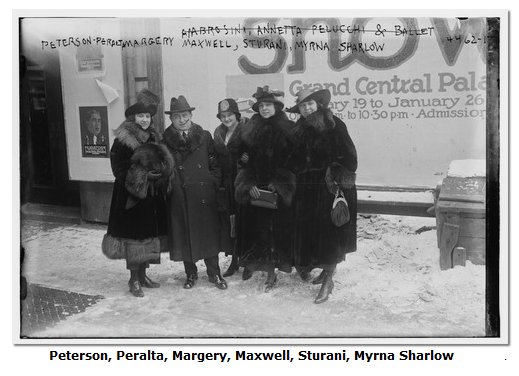 In 1920 Sharlow returned to the Boston Opera House
In 1920 Sharlow returned to the Boston Opera House 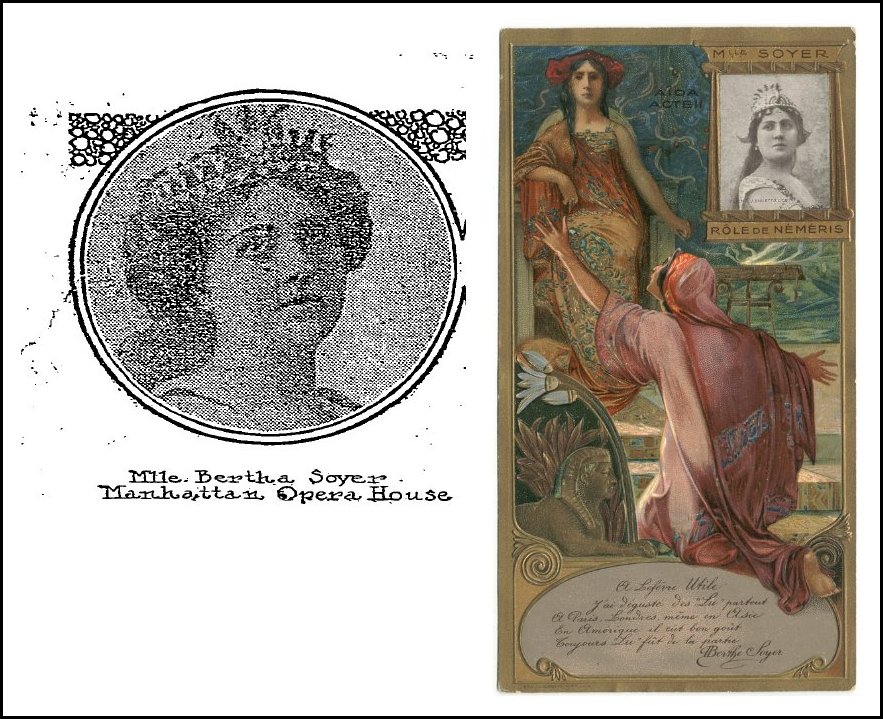
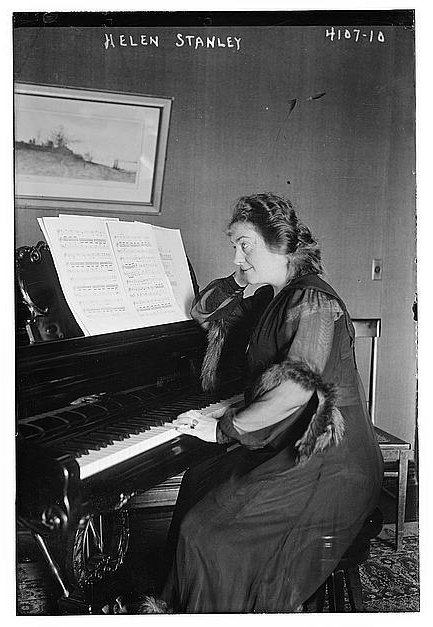
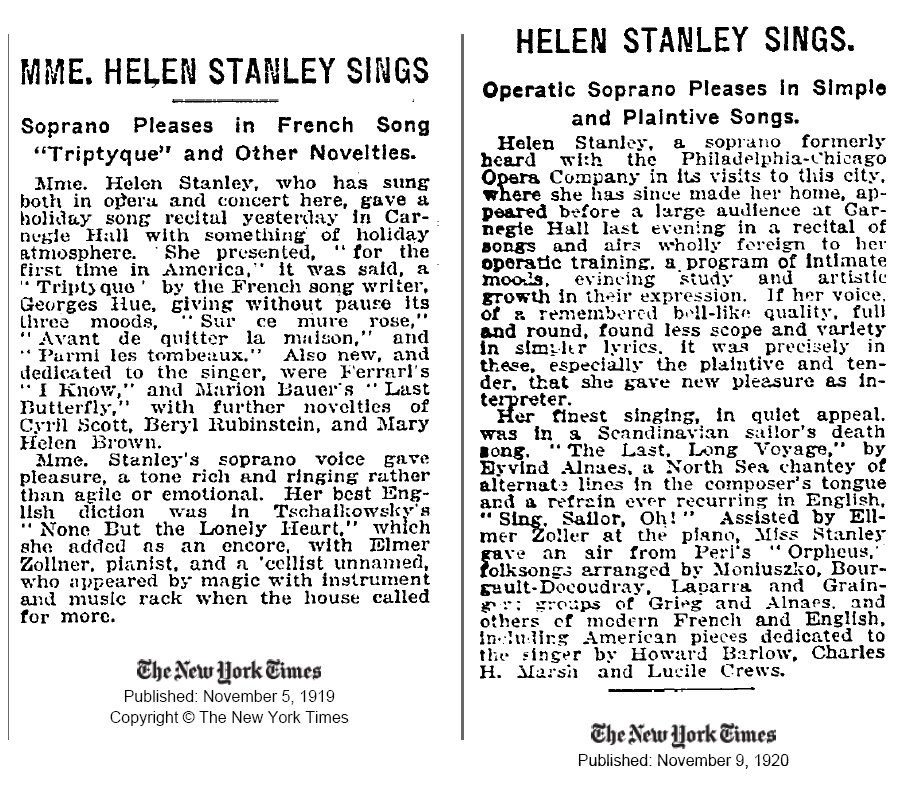
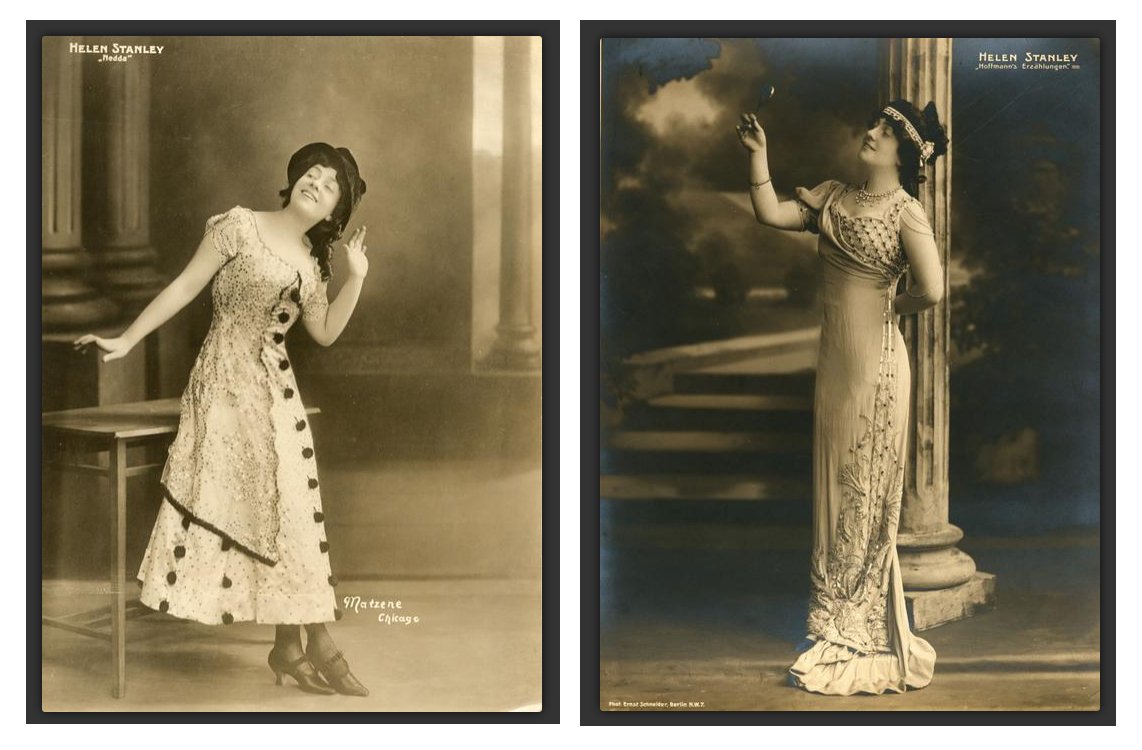
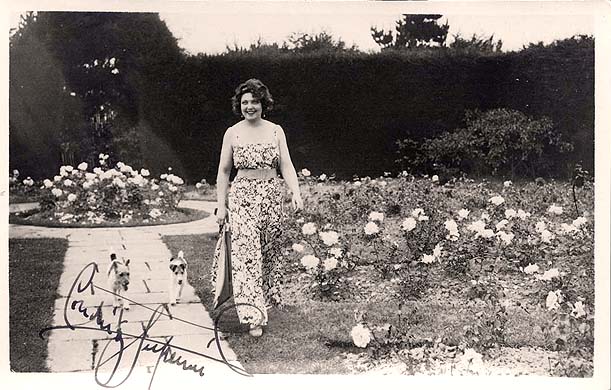 She made her stage debut in 1910 at the young age of 15
at the Teatro Colón, Buenos Aires, Argentina in Stiattesi's
She made her stage debut in 1910 at the young age of 15
at the Teatro Colón, Buenos Aires, Argentina in Stiattesi's 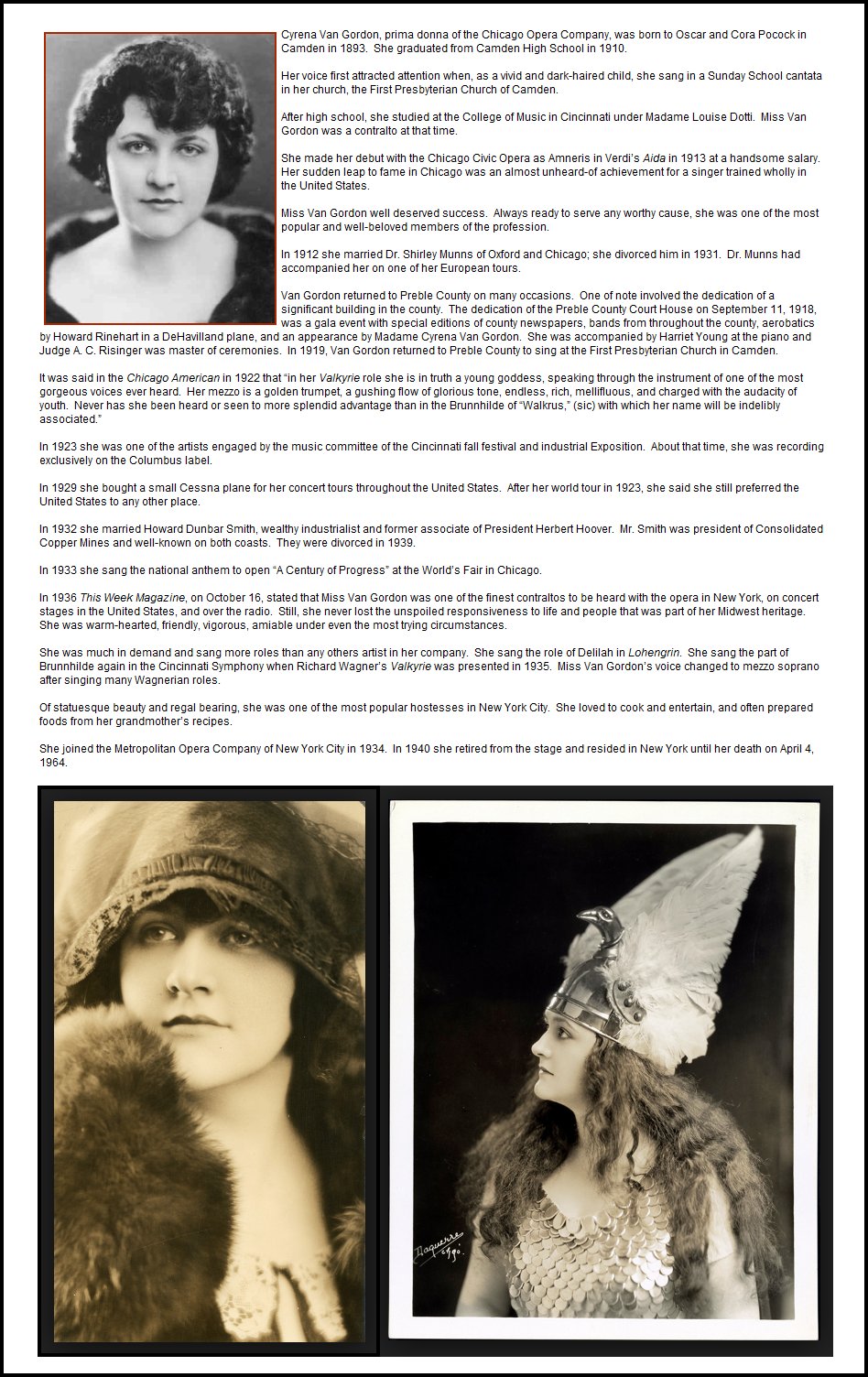
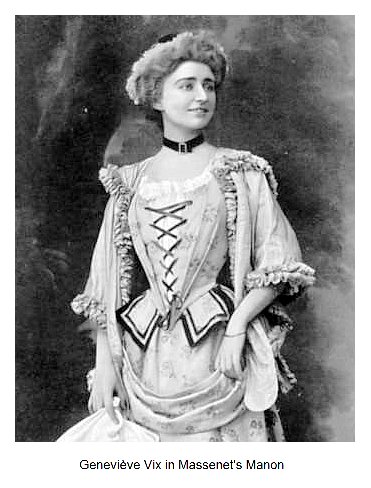 Vix
studied at the Nantes Conservatoire and then at the Paris Conservatoire
as a pupil of Lhérie where she won the first prize for opera in
1904
(as well as second prize for opéra comique). She made her debut
at the
Palais Garnier on 27 January 1905 in the title role in the premiere of
Vix
studied at the Nantes Conservatoire and then at the Paris Conservatoire
as a pupil of Lhérie where she won the first prize for opera in
1904
(as well as second prize for opéra comique). She made her debut
at the
Palais Garnier on 27 January 1905 in the title role in the premiere of 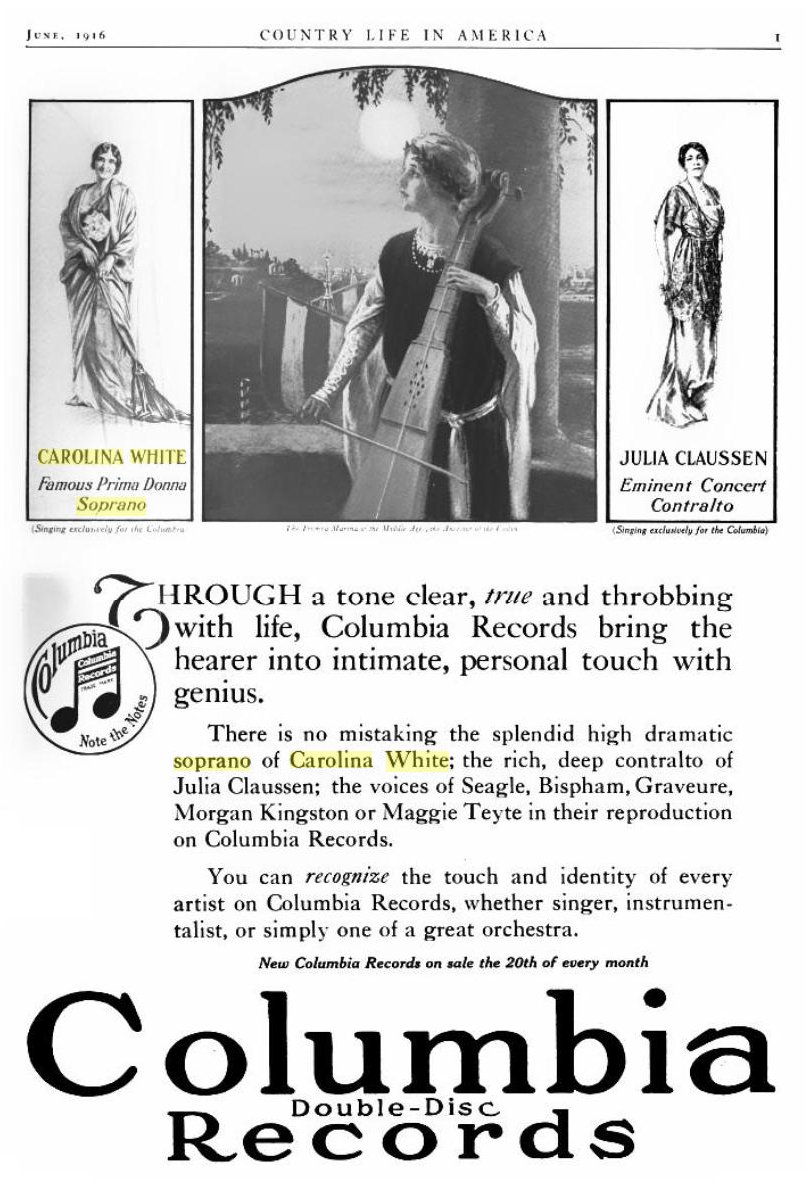
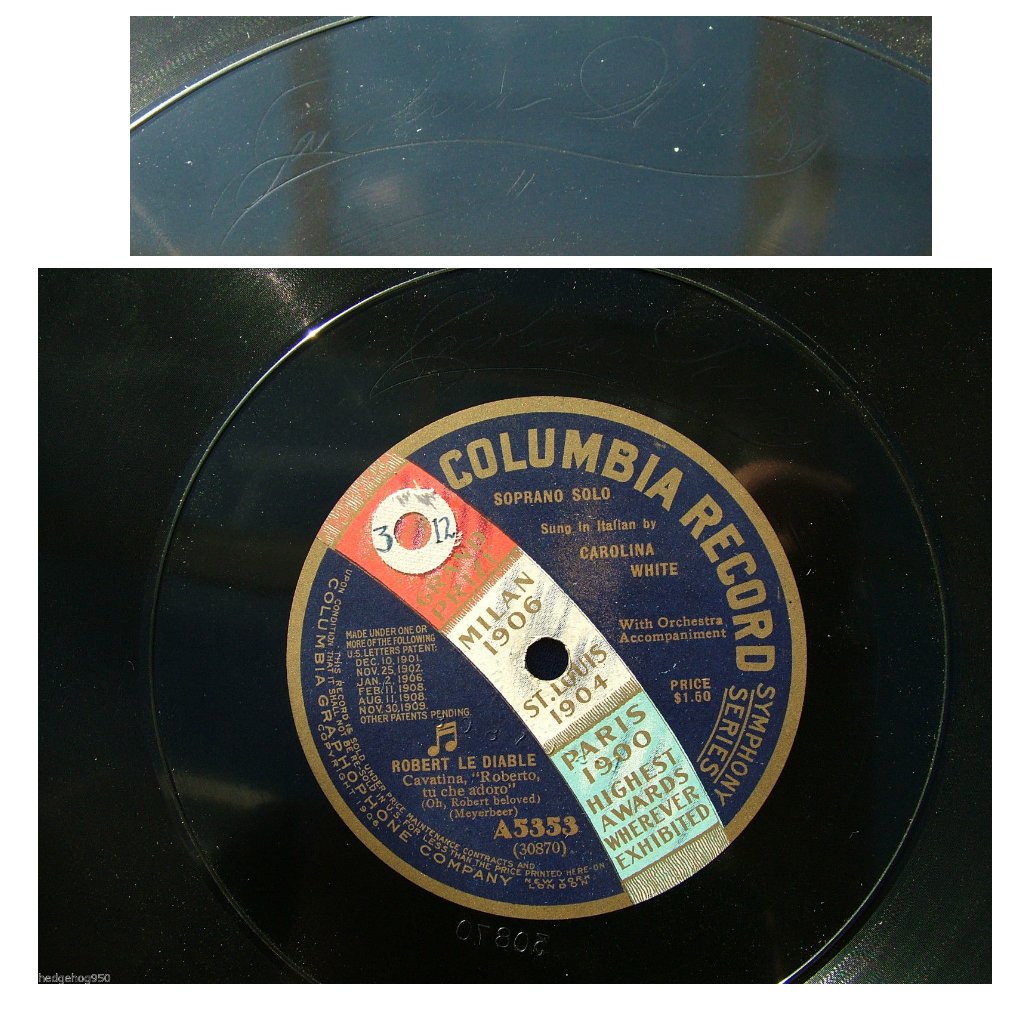
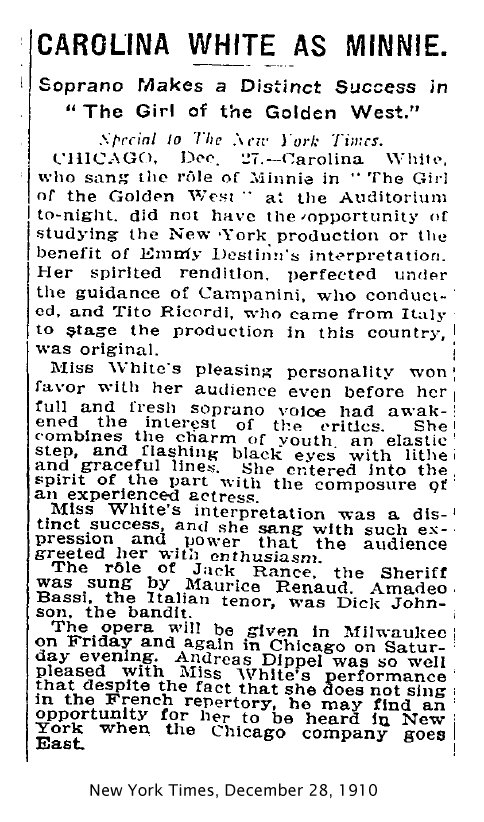
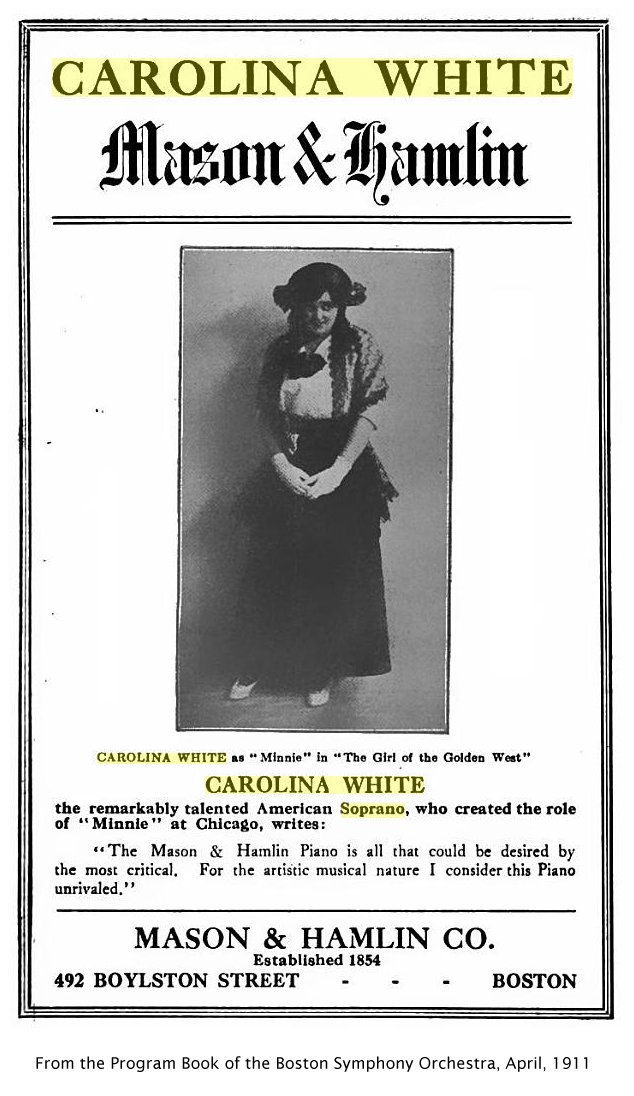
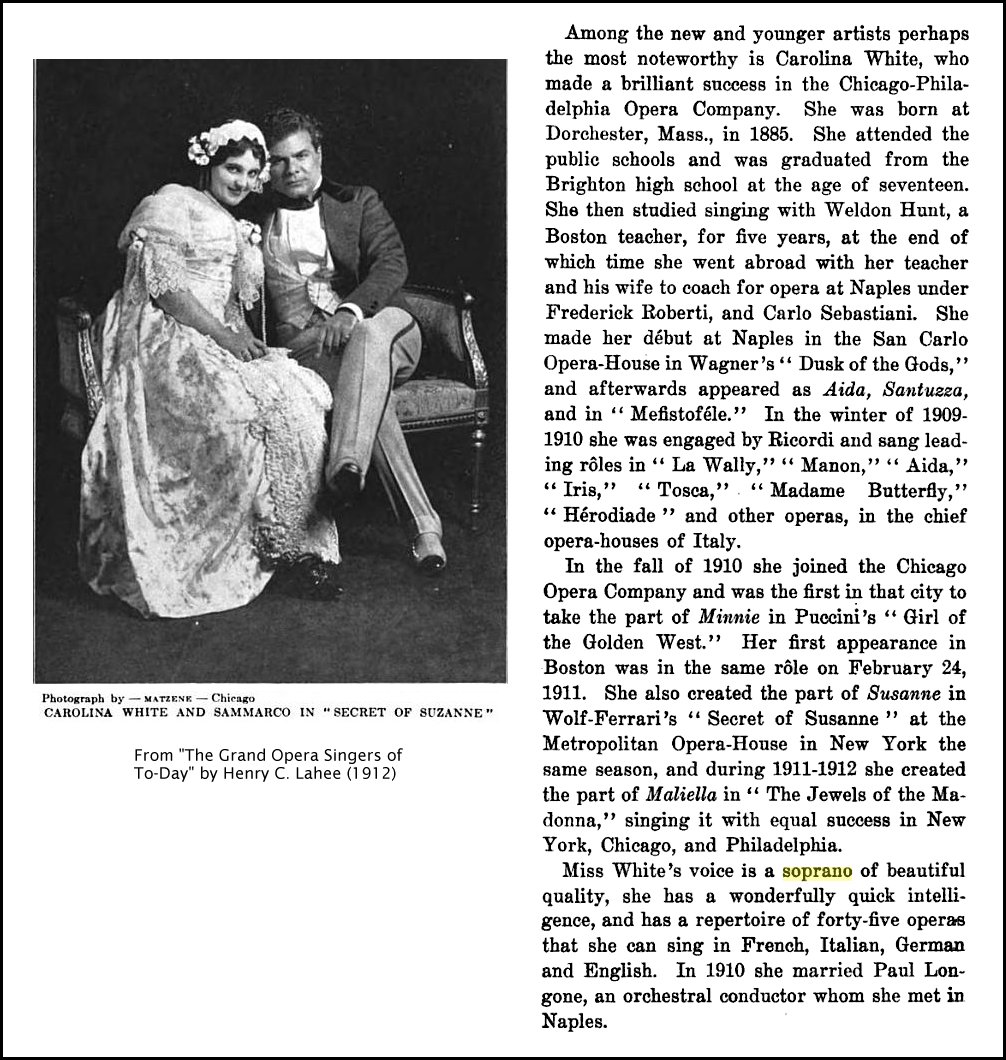
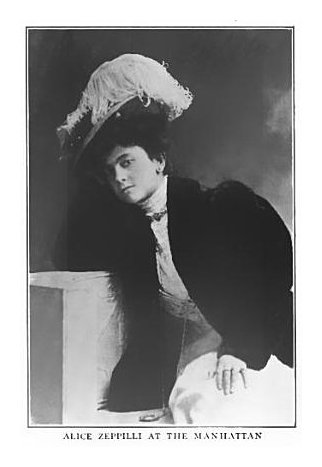
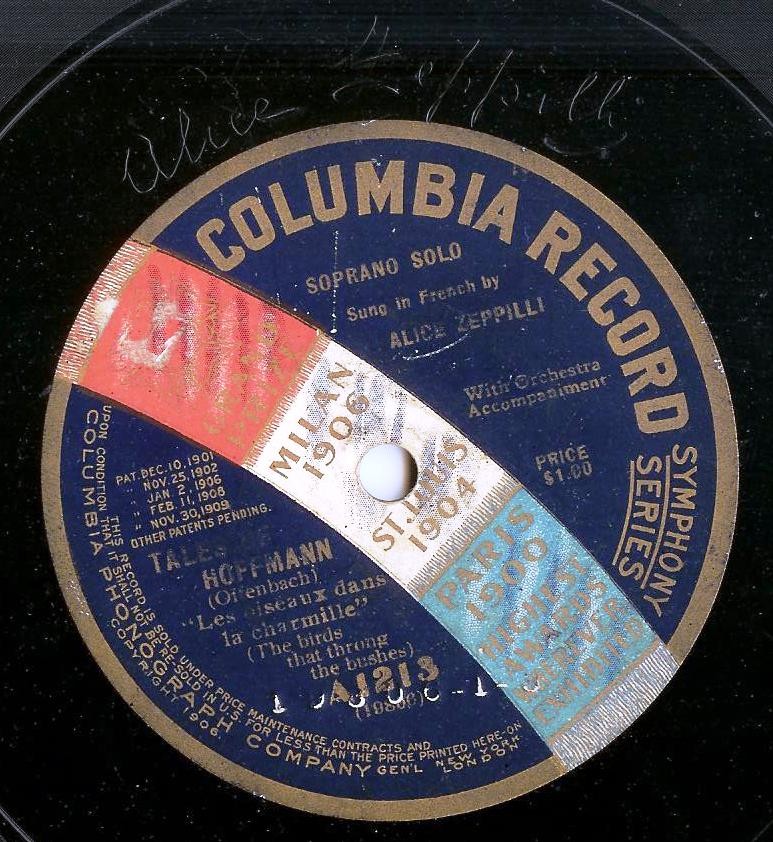
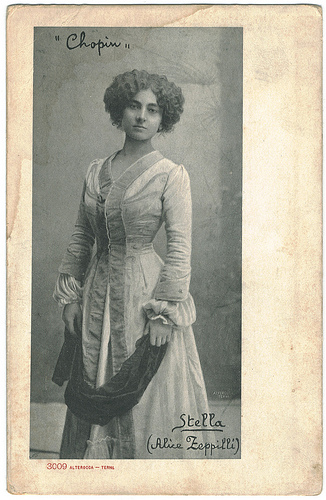 Zepilli
made her professional opera debut in Milan at the Teatro Lirico on 25
November 1901 at the age of 16 as Stella in the world premiere of
Giacomo Orefice's
Zepilli
made her professional opera debut in Milan at the Teatro Lirico on 25
November 1901 at the age of 16 as Stella in the world premiere of
Giacomo Orefice's 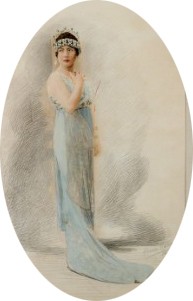 In
1909-1910 Zeppilli also performed at the Opéra-Comique in Paris
where
she made her debut as the title heroine in Léo Delibes'
In
1909-1910 Zeppilli also performed at the Opéra-Comique in Paris
where
she made her debut as the title heroine in Léo Delibes'